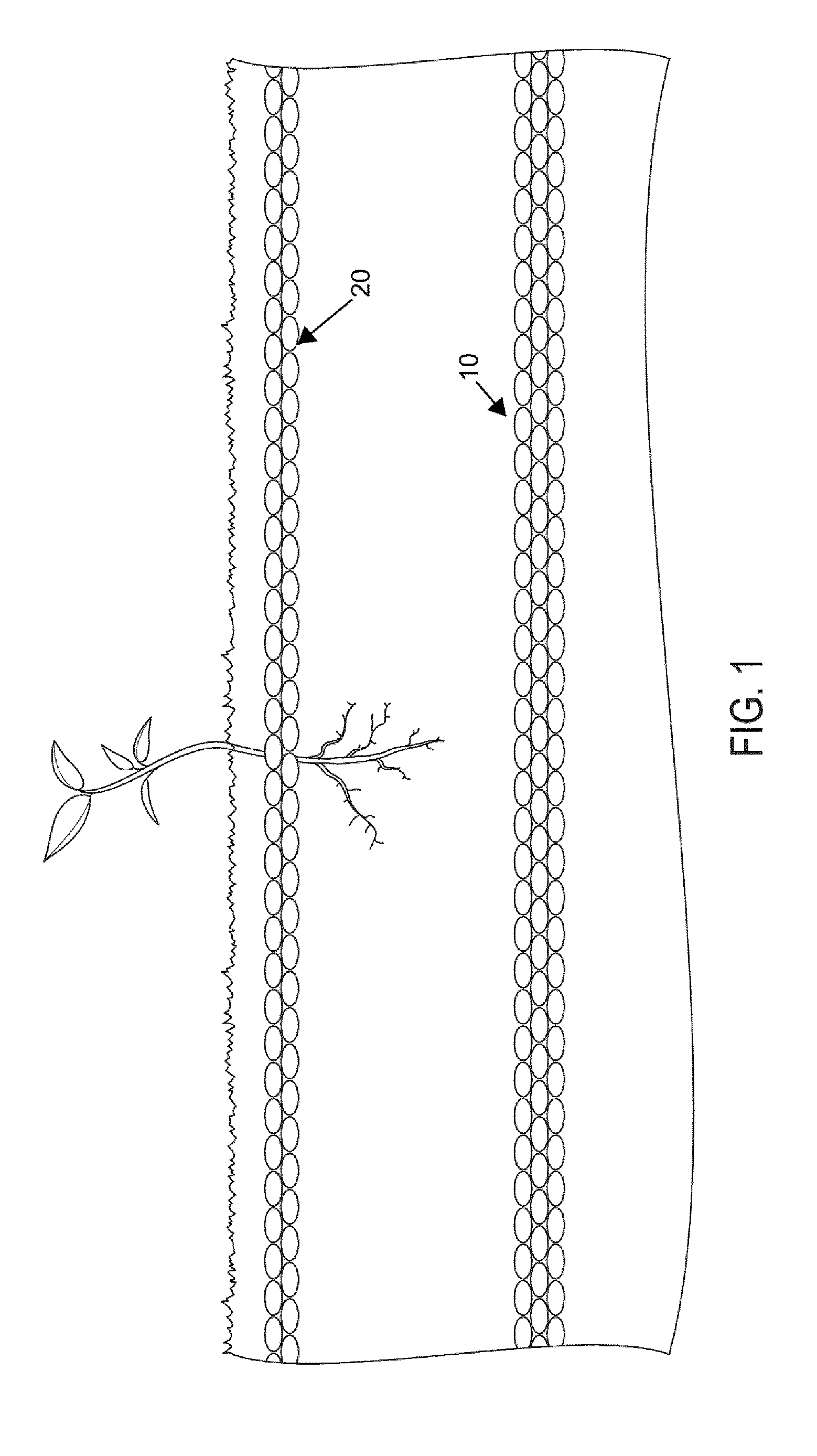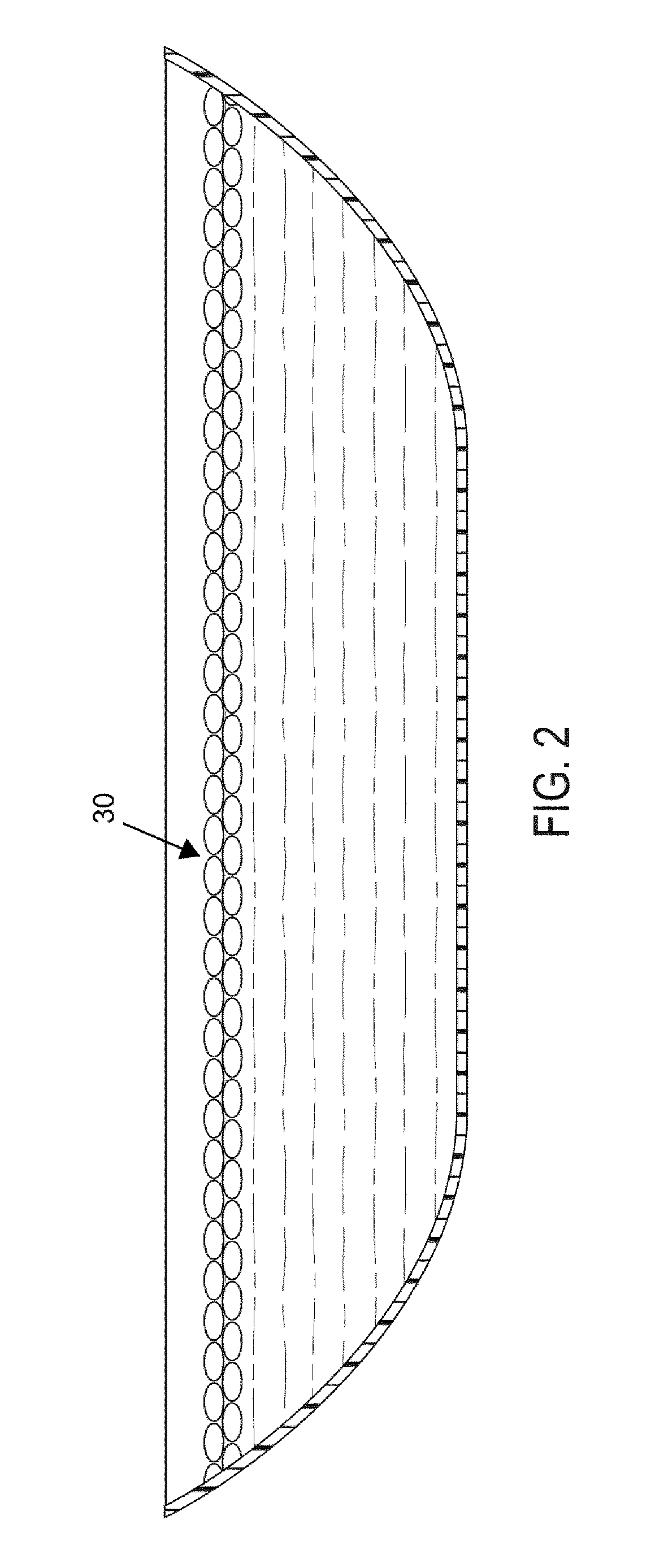Method and system for surface and subsurface water retention
- Summary
- Abstract
- Description
- Claims
- Application Information
AI Technical Summary
Benefits of technology
Problems solved by technology
Method used
Image
Examples
Embodiment Construction
[0048]Introduction and Definitions
[0049]Broadly, the invention relates to the use of a plurality of hydrophobic beads to form a loose packed and granular layer on a surface or alternatively in a subsurface region to create a zone in which a liquid is to be retained. These hydrophobic beads are preferably prepared from an organic co-polymer such as those described in U.S. Pat. No. 8,440,727 issued to Thomas Gradek on May 14, 2013, the contents of which are herein incorporated by reference. The beads may be solid, hollow or have a cellular core construction with a solid surface. Examples of suitable materials that may be used in the fabrication of these hydrophobic beads are neoprene, urethane, polypropylene, plastics and artificial rubbers. Applicant has discovered surprising uses and applications of the hydrophobic beads described in the '727 patent, details of which will now follow. However, it is noted that the invention herein described is not limited to the particular beads desc...
PUM
 Login to View More
Login to View More Abstract
Description
Claims
Application Information
 Login to View More
Login to View More - R&D Engineer
- R&D Manager
- IP Professional
- Industry Leading Data Capabilities
- Powerful AI technology
- Patent DNA Extraction
Browse by: Latest US Patents, China's latest patents, Technical Efficacy Thesaurus, Application Domain, Technology Topic, Popular Technical Reports.
© 2024 PatSnap. All rights reserved.Legal|Privacy policy|Modern Slavery Act Transparency Statement|Sitemap|About US| Contact US: help@patsnap.com










